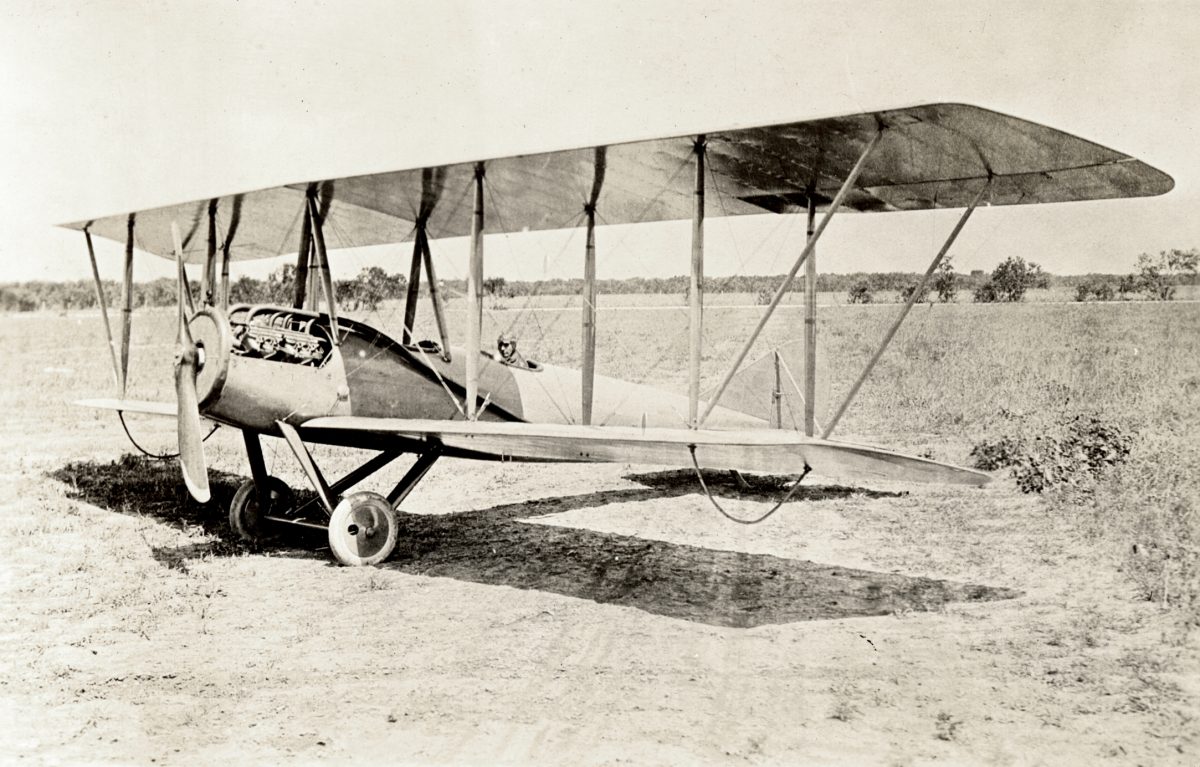
Once called the “King of the Air,” pioneering pilot Cal Rodgers is best known for completing the first 4,000+ mile transcontinental flight across the U.S. in 1911.
Born to a family of distinguished naval heroes, Calbraith (Cal) Perry Rodgers was expected to follow suit. But due to a severe childhood illness that left Rodgers almost entirely deaf, he was prevented from joining the Navy. So, he switched gears and took to the skies instead.
In 1911, Rodgers was introduced to his first aircraft at the Wright Flying School in Dayton, Ohio, where he took flying lessons from Orville Wright. In his early days as a pilot, he participated in the first aerial photography of industrial factories. Then, in August 1911, he won an $11,000 prize for staying airborne for a total of 27 hours over a period of nine days.
At the time, famed publisher William Randolph Hearst offered a $50,000 prize for any pilot who could make a U.S. transcontinental flight in thirty days or less, a feat never before accomplished. In a little over three months after he had learned to fly, Rodgers purchased an airplane and prepared to take off toward the West Coast and win the prize.
Rodgers’ Wright EX biplane was dubbed the “Vin Fiz” after his sponsor’s grape soda product. On September 17, 1911, Rodgers took off for his historic flight. Without any instruments, navigational aids, or maps, the transcontinental journey proved difficult. Rodgers had to use the imperfect method of following railroad tracks to navigate his way from town to town.
Several weeks into the excursion, the Vin Fiz crashed. It was to be the first of sixteen near-fatal crashes and several minor ones that would occur during Rodgers’ flight across the nation. In the end, the Vin Fiz was repaired so many times that the rudder, engine drip pan, and single strut were the airplane’s only original equipment when it successfully landed 49 days later.
Although Rodgers failed to win the Hearst prize, his heroic flight defied the odds and demonstrated to the nation and the world the potential of long-distance air travel. When he finally landed in Pasadena, California, Rodgers was greeted by a cheering crowd of fans and became a national celebrity.
Even after his transcontinental journey, Rodgers continued to entertain fans with aerobatic flights. Above all else, Rodgers loved the freedom of flying. He once told a young boy he had just taken for a free ride in his airplane, “This one is a gift. A gift of flight, the sky, and the wind…Now that is a gift to remember.”
Tragically, just months after his victorious landing in Pasadena, Rodgers died when his plane crashed into the ocean near Long Beach, California. He was 33 years old.
While Rodgers didn’t win the Hearst prize, he won the admiration and respect of a fledging flying industry and the public. He is considered the first deaf (or severely hard-of-hearing) pilot, and has inspired aviators around the world. In 1997, pilot Henry Kisor, who is also deaf, retraced the Vin Fiz’s journey in a 1959 Cessna 150 he dubbed the “Gin Fizz.”
In 1964, along with the Wright brothers and several other notable aviation pioneers, Rodgers was inducted posthumously into the National Aviation Hall of Fame for his contributions to the world of aviation. The Vin Fiz was given to the Smithsonian Institution and is now on display at the National Air and Space Museum.